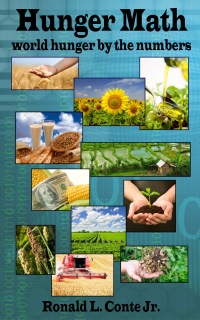Food prices for staples, especially cereals (corn, wheat, rice, etc.), rose worldwide from 2006 to 2008. In 2009, the prices fell somewhat and stabilized, but they were still above their pre-2006 values. The price rise caused a food crisis in the developing world, one that the FAO has discussed repeatedly in its Hunger Reports:
“The current crisis is historically unprecedented, with several factors converging to make it particularly damaging to people at risk of food insecurity. First, it overlaps with a food crisis that in 2006–08 pushed the prices of basic staples beyond the reach of millions of poor people. And, although they have retreated from their mid-2008 highs, international food commodity prices remain high by recent historical standards and volatile. Also, domestic prices have been slower to fall. At the end of 2008, domestic staple food prices remained, on average, 17 percent higher in real terms than two years earlier. The price increases had forced many poor families to sell assets or sacrifice health care, education or food just to stay afloat. With their resources stretched to breaking point, those households will find it difficult to ride out the economic storm.” (FAO 2009 Hunger Report)
The cause of this food crisis is a matter of some dispute. My view is that the U.S. increase in the use of corn for ethanol took millions of hectares of prime agricultural land out of food production, decreasing supply of many grains and thereby increasing prices. Another factor is the increasing demand in developing nations for animal-source foods, which increases demand for grains to feed the livestock. A third factor sometimes cited is the increase in crude oil prices, since fuel is used to run agricultural equipment and to transport food. An FAO Report called “The State of Agricultural Commodity Markets 2009” blames all these factors (PDF page 15). The FAO Hunger Reports generally acknowledge the crisis without assigning a causation.
Is the question academic? Not at all. Market conditions are in place for a repeat of the 2006-2008 food crisis. The U.S. experienced a severe drought in 2012, worse than the drought of 2010, reducing corn yields and overall corn production. Corn prices have skyrocketed above their 2006-2008 highs. Soy and other commodity prices have risen sharply also. Corn and soy are used to feed livestock, causing the prices of feed to rise sharply. It may take about a year for these commodity prices to work their way through the world economic and agricultural system. But a renewed and worsened food crisis is highly likely, beginning in 2013.
See this Forbes article: The Coming Food Crisis: Blame Ethanol?


